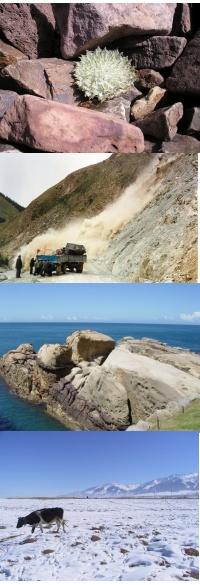What is Geomorphology?
Geomorphology involves a study of the earth’s surface and encompasses the landforms, the processes acting upon these landforms and their development. Human activities on the earth’s surfaces create changes and hence the studies of the effects of humankind fall within the realm of geomorphology. The applications of geomorphology surveys in various aspects of the land for numerous specific needs of mankind will contribute substantially in development. Geomorphoogical processes occur due to the agents of moving water, ice, wind and waves. These dynamic actions or events in Geomorphological systems do result in changes in the form of the earth’s surface, even without climate change. The earth’s surface is always in a continuous mode of change, modified by the various processes. The modifications will depend not only on climate, but also on the nature of materials, the form, and the time period. Thus changes in rates of processes due to climate change will occur in the different environments; Aeolian, Fluvial, Glacial and Coastal as well as on the Slope as shown in the Table below.
Geomorphological Processes
| Processes | Descriptions |
|
Aeolian |
Deflation, soil erosion by the wind sand seas, reactivation of fossil sand seas, sand encroachment, desertification, salinity, flash floods, debris fans, mudflows. |
| Fluvial | River floods, soil erosion by water, (rainsplash, sheet, rill, gully erosion), erosion of river beds and banks, changing position of river courses, sedimentation of river channels and reservoirs - can cause flooding. |
| Slope | Slope instability, mass movements, landslides, mudflows, debris flows, debris avalanches, earthflows, rockfalls, subsidence, reactivation of fossil instabilities, side effects of landslides e.g. flooding, weathering. |
| Coastal |
Sea floods, tsunami, cliff erosion, slope instability, beach destruction, deposition - in harbours, spit development. |
| Glacial |
Crevasses, subglacial and englacial, caves and meltwater streams, glacial surges, shifting positions of glacial snouts and meltwater streams, deposition - meltwater debris, floods, caused by very high meltwater discharges, avalanches and avalanche winds, disruption of frozen ground, solifluction. |
The Geomorphological responses to climate change will depend on both the magnitude and frequency of the change of the climatic variables. Furthermore, the magnitude and frequency of these geomorphic processes are likely to change due to climatic change. Extreme events such as natural disasters will become more frequent and of higher magnitude as a result of increasing climatic variables of temperature, rainfall and wind circulation.
Download file for further reading.
Physical Geography (PDF, 1MB) module discusses the linkages between the atmosphere and biosphere.
